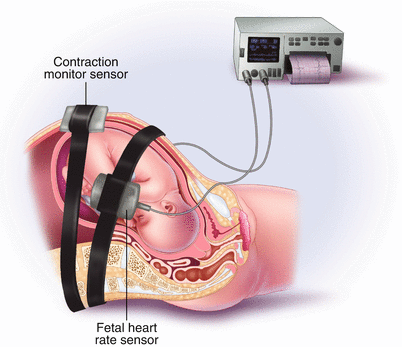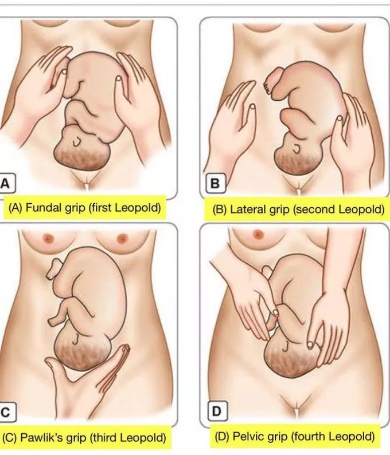A nurse is observing a new mother bathing her newborn son for the first time. For which of the following actions should the nurse intervene?
The mother plans to use a cotton-tipped swab to clean the nares.
The mother leaves the yellow exudate on the circumcision site.
The mother cleans the umbilical cord with tap water.
The mother cleans the newborn's eyes from the inner canthus outwards.
The Correct Answer is A
Choice A Reason:
Using a cotton-tipped swab to clean a newborn's nares can be dangerous. It can push debris further into the nose, cause mucosal damage, bleeding, or even introduce germs. Instead, the nurse should advise the mother to use a bulb syringe for gentle suction if necessary.
Choice B Reason:
Leaving the yellow exudate on the circumcision site is actually recommended. This exudate is part of the normal healing process and does not need to be removed. It acts as a natural barrier to infection and will clear up as the circumcision heals.
Choice C Reason:
Cleaning the umbilical cord with tap water is generally considered safe and can help keep the area clean. However, the nurse should ensure that the mother dries the area thoroughly afterward to prevent moisture from promoting bacterial growth.
Choice D Reason:
Cleaning the newborn's eyes from the inner canthus outwards is the correct technique. It prevents contamination from the outer part of the eye to the inner part and helps to clear any discharge or debris effectively.
Nursing Test Bank
Naxlex Comprehensive Predictor Exams
Related Questions
Correct Answer is D
Explanation
Choice a reason:
Temperature monitoring is important in preterm labor to detect infections or inflammations that could complicate the pregnancy. However, while maternal temperature is a vital sign that should be monitored, it is not the priority in this context. The priority is to assess the well-being of the fetus, which is directly indicated by the FHR.
Choice b reason:
Bowel sounds are assessed to ensure gastrointestinal function and to detect potential complications such as ileus or bowel obstruction. In the context of preterm labor, while bowel sounds are part of a comprehensive assessment, they are not the priority over fetal well-being and maternal respiratory status, especially when administering magnesium sulfate, which does not primarily affect gastrointestinal function.
Choice c reason:
Respiratory rate is a critical assessment when administering magnesium sulfate due to the risk of respiratory depression as a side effect of the medication. It is essential to monitor because maternal oxygenation directly affects fetal oxygenation. However, the FHR is a more direct measure of fetal distress and therefore takes priority in this specific assessment.
Choice d reason:
Fetal heart rate (FHR) monitoring is the priority nursing assessment when administering magnesium sulfate IV to a client in preterm labor. Magnesium sulfate can affect uterine contractions and, by extension, fetal oxygenation and well-being. FHR is the most direct indicator of fetal distress, which can occur if the uterus becomes too relaxed and compromises placental blood flow or if there are side effects affecting the mother's cardiovascular status. Therefore, continuous monitoring of FHR is crucial to ensure the fetus is not experiencing distress.

Correct Answer is B
Explanation
Choice A reason:
The left lower quadrant is not typically where fetal heart tones are auscultated when the round, firm part of the fetus (usually the head) is palpated in the fundus and the long smooth surface (indicative of the back) is on the right side. Fetal heart tones are best heard through the back of the fetus, and in this position, the back is not located in the left lower quadrant.
Choice B reason:
The right upper quadrant is the correct location to auscultate fetal heart tones in this scenario. The Leopold's maneuvers suggest that the fetus is in a cephalic presentation with its back facing the right side of the mother's abdomen. Therefore, the fetal heart tones are most likely to be heard in the right upper quadrant, just below the level of the fundus.
Choice C reason:
The right lower quadrant is generally not the area to auscultate fetal heart tones if the fetus's back is on the right side and the head is in the fundus. The heart tones are typically higher up and closer to where the back is palpated.
Choice D reason:
The left upper quadrant would not be the correct place to find fetal heart tones given the described position of the fetus. With the back on the right side, auscultation on the left would not yield the clear heart tones expected.

Whether you are a student looking to ace your exams or a practicing nurse seeking to enhance your expertise , our nursing education contents will empower you with the confidence and competence to make a difference in the lives of patients and become a respected leader in the healthcare field.
Visit Naxlex, invest in your future and unlock endless possibilities with our unparalleled nursing education contents today
Report Wrong Answer on the Current Question
Do you disagree with the answer? If yes, what is your expected answer? Explain.
Kindly be descriptive with the issue you are facing.
